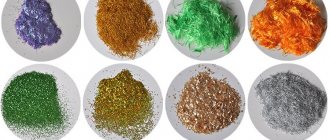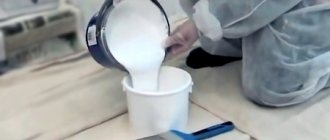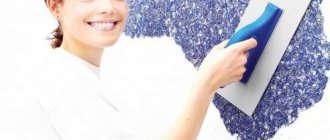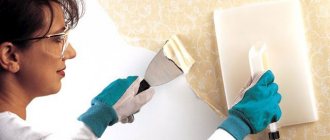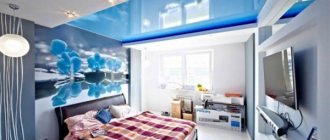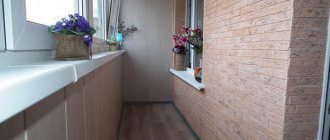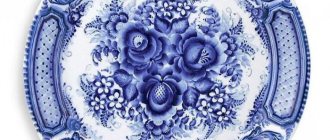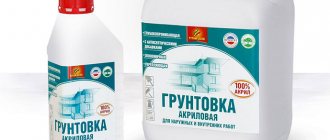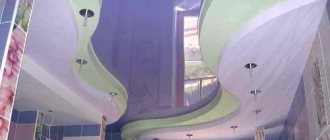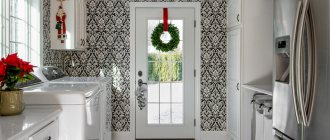Silk plaster has a lot of advantages for little money. You can decorate a wall beautifully and practically using modern varieties of decorative plaster. Plaster, which is called silk wallpaper, consists of a mixture of cellulose, silk fibers and decorative additives, polymer granules. This is a completely natural coating that has a lot of useful properties. Such wallpaper is easy to clean, does not fade in the sun, is resistant to damage, has an attractive appearance and a chic shine. For anyone doing renovations, time is especially valuable. Liquid wallpaper is applied quickly, and the wall under it does not need to be perfectly leveled.
What is liquid wallpaper and its varieties
There is a version that liquid wallpaper was first invented in France and its appearance was historically associated with Charles VII. Allegedly, it was in the castle he captured that the walls were first covered with a mixture of crushed silk and flour. The king was impressed by this original idea of the masters and this technology was used in other palaces.
The use of this material can give an ordinary room a palace luxury
In fact, it would be correct to call the material paper plaster, and not wallpaper, but that’s the way it is. So, liquid wallpaper - what is it? This is a crumbly dry multicomponent mixture, which is packaged in bags by weight, and for application diluted with water or an adhesive composition.
Liquid wallpaper contains the following components:
- Cotton or cellulose fibers. This component makes up 90 percent of the material. Recycled raw materials can be used for the mixture. The waste from textile and woodworking production and waste paper is used.
- Decorative elements. Their main task is to decorate and give a special relief to the coating. For this purpose, sequins, silk fiber, small beads, wood chips or threads and various dyes are used.
- Adhesive base. The binder composition can be PVA, regular wallpaper glue or bustilate, paste. Natural compounds, non-toxic and inexpensive are welcome.
- Additional additives. To prevent mold fungi and pathogenic bacteria from multiplying on the surface of the material, antiseptics are added to paper plaster. If you plan to use the coating in rooms with high humidity, it is advisable to coat it with varnish.
For your information! Mixtures are available for sale, diluted with water and ready for application. They are sold in buckets. These wallpapers are a little more expensive.
The color palette of the material is very rich. You can choose a plain or variegated coating, combine different colors in patterns and relief coating
Table 1. Types of material
| Photo | View | Description |
| Silk | Consists of silk fibers. Does not fade from the sun, is durable and easy to care for. The price corresponds to the quality. | |
| Cellulose | Does not like direct sunlight. More suitable for rooms with artificial lighting. They do not have a long service life, but they are inexpensive. | |
| Silk-cellulose | Combining cellulose and silk fibers gives excellent results. The resulting material is of excellent quality and is UV resistant. |
How to choose liquid wallpaper
Anyone who has ever held a spatula in their hand can buy inexpensive liquid wallpaper and make original repairs. The compositions are easily applied to the prepared surface, and in skillful hands they are a material from which you can create unique paintings and complex ornaments. To enjoy the result for 10-15 years, you need to choose the right wallpaper. It is recommended to pay attention to the fiber composition, texture, color saturation. Properly selected material will delight you with tactile sensations, durability, and easy maintenance.
Fiber composition
Blends based on silk, cellulose, cotton, and silk-cellulose fiber are produced. Silk does not fade in the sun, is elastic, and has a pleasant tactile sensation. Wallpapers based on artificial and natural fibers have a long service life. The disadvantage of coverage is the high price.
Cellulose-based mixtures belong to the budget category. They form a coating with good vapor permeability, which has a weak texture and short service life. Collections based on cotton fiber, textured. The service life is longer than that of cellulose-based coatings. Combined compositions have all the advantages of the materials used. Manufacturers add silk threads to cellulose for reinforcement and increase service life.
Texture
Fine-relief liquid wallpaper forms a smooth surface, lies on the base in a thin layer, and is characterized by low consumption. After mixing with water, the mixtures are highly plastic, which requires skills in work. Used in places with high load on the walls, they are well covered with protective acrylic varnishes. Adding flocks makes the texture more prominent.
Large-relief collections are recommended for walls with small defects. They hide chips and cracks well, are easy to apply by hand and are suitable for beginners. The addition of flocks does not have a strong effect on the texture, but favorably emphasizes the decorative qualities of large-relief wallpaper. You can make this type of composition yourself by adding finely chopped pieces of thick paper.
Chroma
Which liquid wallpaper is best for the bedroom, and which is more suitable for the living room? Manufacturers offer dozens, hundreds of shades. Preference is given to pastel colors, which create a cozy atmosphere in the bedroom, living room, kitchen, and hallway. Bright shades are recommended for game rooms, billiard rooms, hallways, and salons. Within one collection, colors are combined with each other, which allows you to create original combinations when implementing projects.
Preserving color is one of the main tasks of a property owner. Fading due to solar ultraviolet rays will lead to premature repairs. To prevent this from happening, it is recommended to use collections based on silk fibers that are resistant to UV radiation.
Photos of liquid wallpaper in the interior and some features of their use
In interior design, the main thing is a harmonious combination of colors and materials. This rule also applies to liquid wallpaper. You should not combine this material with traditional wallpaper, paper, non-woven or vinyl.
Examples of using cellulose coating in the interior:
Advice! The best decoration for a wall with paper plaster is paintings or artistic panels. Fresh flowers also look good against this background.
Using paper plaster, you can easily zone a room. For this purpose, materials of different colors or even textures are used.
No risk: using liquid wallpaper for the bathroom
There is a traditional opinion that the bathroom and toilet should be decorated with ceramic tiles and nothing else. It must be admitted that ceramics can now satisfy the most demanding tastes. You can choose not only the original color, but also use decoration with ornaments or ceramic-based panels.
Liquid wallpaper can be called a bold and extraordinary solution for decorating a bathroom. This room is characterized by a humid atmosphere and temperature changes. For this reason, you should approach the choice of wall and floor coverings with special care. Ordinary wallpaper is not suitable in this case. They won't last even a couple of months, and that's only if you used high-quality glue. But liquid wallpaper is another matter. It turns out that they are great for the specific conditions of the bathroom.
See what liquid wallpaper looks like in toilets, photo gallery of Internet options:
According to reviews, liquid wallpaper in bathrooms copes well with dampness, temperature changes and poor ventilation of the room. In addition, this material successfully resists the development of fungus.
To decorate the bathroom, a material with special characteristics is used. It costs more than conventional cellulose composition
Advice! Before you start decorating your restroom, determine the places on the walls where water most often gets from the sink and bathtub. Here it is better to use ceramics, combining it with the main decoration of the walls using cellulose plaster.
For additional protection, the decorative wall covering should be treated with acrylic varnish. But don’t get carried away with the process: 1-2 layers are enough. If you overdo it, the wallpaper will be difficult to replace in damaged areas and may develop cracks. Before choosing such a coating, study the photo of the interior. Liquid wallpaper requires a special approach. If you have the skills to apply this composition, you can safely experiment with patterns and ornaments.
Pay attention to the photos of liquid wallpaper in the apartment, from which real masterpieces are created:
This material has many advantages that are worth mentioning.
Table 2. Advantages of liquid wallpaper
| Advantage | Description |
| Ease of use | The dry mixture is diluted with water in a ratio of 1x6 and applied to the wall with a regular spatula. |
| Big choice | The range of materials is very wide. A rich palette of colors and textures allows it to be used in almost any interior. |
| Use on any surface | Paper plaster can be applied to the ceiling and walls, and there will be no joints or seams on the surface. |
| Correction of uneven walls | The paper mixture can be used to smooth out small defects in the walls. It is important that the base is painted white. |
| Breathable surface | The structure of this coating does not prevent oxygen from reaching the wall surface. |
| Freedom of creativity | The material allows you to “play” with texture, volume and color. Skillful use of liquid wallpaper will make your interior unique. |
Check out what liquid wallpaper looks like in an original interior:
For those who are against the use of liquid wallpaper in the kitchen: photos of interiors
A modern kitchen is not just a place for cooking. There is no shame in hosting guests in a beautiful kitchen. Lunch with loved ones here will be filled with special comfort and a sincere atmosphere. The kitchen, like the bathroom, is a room with special operating conditions. There is not only high humidity and high temperature, but also steam and soot.
You can often find negative reviews about liquid wallpaper in the kitchen. Skeptics argue that any plaster, cellulose or traditional, is a difficult coating to clean. They are right, but only partly. Materials created using modern technological techniques can be adapted to specific operating conditions. Some useful tips on how to use liquid wallpaper for the kitchen:
- paper plaster should not be used in the work area. It is better to decorate the space above the sink and near the stove with ceramic tiles;
- so that the coating does not absorb odors and is easy to clean, it should be coated with acrylic varnish;
- if necessary, you can renew part of the coating by soaking the wallpaper with plain water;
- For cosmetic repairs, you should stock up on wallpaper from the same batch as the main coating.
By following these recommendations, you will achieve excellent results. See what the kitchen interior looks like with this coating:
Advice! If you plan to decorate your kitchen interior with wallpaper, be sure to install a hood above the stove. It will keep the wall covering in its original form for a long time.
Related article:
Wallpaper for the kitchen is washable: the catalog of photo ideas discussed in our review will allow you to choose the best options without mistakes from the entire variety presented on the modern market.
Liquid wallpaper for a small corridor space
Paper plaster fits organically into the interior of the narrow hallway space. With its help, you can even out wall errors, and the exquisite texture will give the interior a special zest.
Considering that in the hallway, as a rule, there are no windows, you should choose light colors for decoration. Do not use liquid wallpaper in overly bright colors. If the hallway has low ceilings, you can make a smooth transition of two shades: a light tone on top, a darker tone below.
In the corridor, you can even create three-dimensional designs using cellulose plaster. But everything should be in moderation. A drawing on the wall that is too fancy will look heavy in a small space.
Designer recommendations for combining liquid wallpaper with other materials:
- use regular wallpaper inserts on non-woven or vinyl base;
- combine liquid wallpaper with cork, bamboo or wood panels;
- combine paper plaster with inserts of regular plaster, observing harmonious color transitions.
Photo of using liquid wallpaper in the hallway:
Related article:
Wallpaper for the corridor and hallway: photos of the best options can be seen in our review, as well as familiarize yourself with the main criteria for choosing canvases.
High-quality wall decoration: liquid silk wallpaper
The undoubted advantage of this coating is the ease with which the integrity of the canvas is restored. Wallpaper is called “liquid” because the mixture is mixed with water until smooth. If the finished coating is damaged, for example, a scratch, you can eliminate this defect in a couple of minutes and smooth out the wallpaper. This property makes it possible not to update the renovation every couple of years. It is especially important to use liquid silk wallpaper in apartments where there are children or pets who often damage the walls.
Wallpapering is extremely easy:
- The mixture is sold in packaged form;
- Each package has instructions, which indicate in detail which glue to choose, how to glue wallpaper;
- The contents of the package are poured into water, infused and mixed by hand;
- According to the instructions, you need to wait time for the silk and cellulose particles to become saturated with water;
- Then, using a wide spatula, the wallpaper is applied to the wall like regular plaster;
- Due to the texture of the fibers, it is not necessary to achieve an ideal level;
- The wallpaper dries and then delights its owner with its beauty and convenience for many years.
Thanks to its relief base, silk plaster can be applied even to uneven surfaces
Compliance with technology is the main condition for high-quality wall finishing. Under the wallpaper, the wall needs to be leveled, plastered and primed. Then the adhesion of the paper and silk mass to the wall surface will be as strong as possible.
Related article: Choosing a flexible curtain rod
Liquid wallpaper: disadvantages, reviews without retouching
Before planning a renovation, read reviews about liquid wallpaper. This will help you take off your rose-colored glasses and really look not only at the features of the material, but also at your own capabilities. We have selected for you several truthful reviews from those who made liquid wallpaper with their own hands and appreciated them in practice (the authors' spelling has been preserved):
Scirly: Before applying, I watched the video again. Everything is so simple and clear, I thought I’d do everything quickly and that’s it. But it was not there…. It couldn’t be done as easily and simply as in the video; the scraper was not convenient. The wallpaper lay with bald spots and was uneven; I had to straighten it with my hands, especially the corners. Gluing the corners with a scraper turned out to be unrealistic for me. How to achieve a layer thickness of 1-1.5 mm remains a mystery to me. It seems to me that this is impossible in principle... Read more on Irecommend:
Pay attention to reviews about the pros and cons of liquid wallpaper. Often their benefits are easily disputed by practitioners. Here is an example of such a review:
KosmonautMisha: First of all, I would like to immediately dissuade you from purchasing and applying this coating to the walls. Believe me, it’s better to hang regular wallpaper, it’s better to paint the walls in the end, just not to smear this fluffy nonsense. How convenient are such wallpapers? No wall preparation required. Actually it is required, but everyone says the opposite. In fact, if your walls are crooked, you can level them using liquid wallpaper. Only, firstly, the material consumption will increase (and wallpapers are not the cheapest, prices for the cheapest ones start from 500 rubles, and the limit...decorative silk plaster, a variety, costs up to 2000 rubles, and maybe more)... Read more on Irecommend :
Paper plaster is used not only for covering walls. Some people also apply this finish to ceilings. If the room is located on the top floor of the building, this technique is justified. Additional ceiling treatment will keep the room warm. But not everyone thinks it's a good idea to apply liquid wallpaper to ceilings. Photos and reviews sometimes indicate extremely unsuccessful experiments. And, by the way, inviting outside specialists does not guarantee a successful result. Here is one such story:
Felina : In the hallway, a female plasterer applied the wallpaper until it dried, it looked beautiful - smooth and bright, only the layer turned out to be twice as thick and it took her much less time. But when it all dried, it was just terrible! It turned out that she did not mix the glue well, and where it was in lumps, there were “bald” areas. In addition, the walls turned out to be somewhat “non-uniform”; apparently, she applied the wallpaper in different directions. She also failed to make normal corners, although the walls had been leveled before and the corners were perfect... Read more on Irecommend:
For DIYers: how to make liquid wallpaper with your own hands
Some craftsmen actually make this type of coating with their own hands. How to make liquid wallpaper at home? It would seem that the task is not difficult. Shred paper or fabric with scissors, add glue and glitter - and you're done. You can find many instructions on how to make liquid wallpaper with your own hands. Manufacturing proportions and original ideas are not difficult to find on numerous websites.
But don’t rush to take up the scissors. Imagine that to treat one square meter of wall you will need 300 grams of dry mixture, but for the entire wall? Even if it takes up a modest 12 squares, you will have to cut at least three and a half kilograms of paper. Take a stack of newspapers of this weight and imagine the amount of work. Please note that each particle should be only a few millimeters in size. If you don't have a special automatic cutting tool, you'll end up with scissor calluses. And another argument against: you can’t use magazines and newspapers for cutting. Newspapers will leave black streaks of printing ink on the walls, and the glossy paper of magazines does not absorb glue and moisture. You will have to buy special paper, quite soft and loose. Do you want to cover your walls with toilet paper? Hardly. Then she doesn't fit.
If you still can’t be dissuaded, let’s talk in more detail about how to make liquid wallpaper with your own hands. Our master class is devoted to making from paper and other available materials.
Table 3. Making liquid wallpaper with your own hands
| Photo | Description of work |
| To make the mixture, use stationery paper, remnants of old uncoated wallpaper, children's drawings and other similar materials. | |
| The easiest way to shred material is with a shredder - a special paper shredder. It is usually used in offices. It is not advisable to buy such a tool just for making wallpaper. It's better to rent. Some craftsmen shred paper using an electric planer or electric saw. The paper should be cut into thin strips. If the cutting process is manual, cut into pieces as small as possible. | |
| The resulting material is soaked in water for 5-6 hours. During this time, the material will be saturated with moisture and will be ready for further mixing. | |
| To remove remnants of printing ink, ordinary chlorine bleach such as “White” is added to the soaked paper. Can be used to bleach toilet cleaning fluid. | |
| After bleaching, the mixture should be rinsed several times with clean water. To do this, lay it out on a piece of cloth (preferably synthetic) and squeeze it out, rinsing it periodically. | |
| After rinsing, add water to the paper ball and stir it using a mixer. The edges of the stirrer need to be sharpened so that it cuts the paper. | |
| For decoration, mica (for shine) and bright synthetic threads are added to the mixture. You can use glitter, pieces of foil or bark. | |
| Ordinary cotton wool will add volume to the material. It should be cut into small pieces with scissors. | |
| After adding the decorating material, mix the mixture with your hands and add glue. | |
| As a result, you will get a surface like this - white with small inclusions. If this background does not suit you, you can add color during the mixing process. |
Consumption of liquid wallpaper per 1 sq. m. - nuances of calculations, application and storage of material
Why is it important to make calculations in advance? If you buy too little mixture, it will run out at the most inopportune moment; if you buy too much, you will waste your money. Considering the cost of the material, extra expenses will be sensitive to the family budget. So it’s better to spend an extra hour doing the calculations to be sure of the result.
To calculate, you will need to measure the area of the walls and subtract the area of window and door openings from the result. If you have forgotten how to do this, find any fifth grader.
Advice! When calculating the material, allow for a reserve. It will be useful for subsequent repairs. And also keep in mind that if you have little experience in plastering work, the sweep consumption will be higher.
You can read about the consumption of one package of liquid wallpaper in the instructions for the mixture. The manufacturer usually places a label on the box or bag
Table 4. What can affect the mixture consumption
| Factor | Description |
| Blend quality | If the mixture is not mixed well, clots may form and the consumption of the mixture will increase. |
| Dilution rate | The more water, the thinner the coating; in addition, it adheres worse. This factor should be taken into account. |
| Storage duration | The diluted mixture cannot be stored for a long time. It loses elasticity and fits worse. |
| Base quality | The consumption of liquid wallpaper per 1 square meter largely depends on the degree of surface preparation. If the walls are uneven and covered with cracks, more mixture will be needed to level the surface. |
On average, one kilogram package is enough for 4 squares. If you have a spraying machine, then for 6 square meters. If you do not have professional plasterer skills, you will need one package per 3 meters.
Advice! A simple trick will help reduce material consumption: before applying wallpaper, paint the wall in the same tone as the future coating. This way you can avoid “bald patches” and significantly reduce mixture consumption.
How long does liquid wallpaper take to dry? It all depends on the thickness of the layer. When applied professionally, a day is enough for the mixture to dry completely. If you had to level the walls and fill cracks, apply a thick layer - it may take several days.
Important! Do not store the diluted mixture for more than three days. After this period, it will lose its normal color and elasticity.
If you hate to throw away the diluted wallpaper, dry it on plastic wrap, break it into pieces and store it in an airtight container.
How to apply liquid wallpaper: video and photo master classes
The technology of applying liquid wallpaper involves a manual or mechanical method. How to glue liquid wallpaper? Manual application is carried out using a regular plaster trowel. Some people use a roller for this purpose - it applies the mixture in a thinner layer. If you use a relief roller, you will get a textured surface.
The process can be mechanized using a spray gun. To use it, you need to mix the composition very thoroughly.
We have selected for you several master classes with photos and videos of applying liquid wallpaper with your own hands. But before we show how to properly apply liquid wallpaper, we should talk about surface preparation.
How to prepare walls
Preparing walls for liquid wallpaper begins even before purchasing the material. Defective areas should be smoothed out with putty. Make sure there are no cracks or gouges in the walls.
To apply the mixture, the wall can be left white or painted to match the future coating
Advice! Examine the surface and remove all nails, screws and bolts. The resulting holes must be covered and leveled.
The next stage is a primer for liquid wallpaper. It is best to use an acrylic mixture. It does not have a strong odor and penetrates deeply into the plaster. Using an acrylic primer for liquid wallpaper, you can significantly save material. The only disadvantage of acrylic is that it is not applied at temperatures less than five degrees Celsius. But, in principle, it is not recommended to apply liquid wallpaper in a cold room.
Another composition for priming is quartz. It is applied at any temperature.
The surface turns out to be slightly rough, and it will be very convenient to apply paper plaster with a trowel.
If the walls in the room are covered with plasterboard, they should be completely plastered. If you align only the joints of the sheets, you will get an uneven surface and this defect will appear when applying the topcoat.
How to apply liquid wallpaper to a wall: video and photo recommendations
To apply liquid wallpaper to walls, you will need a trowel or roller. If you have no experience in such work, start with the section of the wall that will be least noticeable - behind the cabinet or near the floor. After the first square meter you will understand the principle of operation.
Table 5. Liquid wallpaper, how to apply it to the wall
| Photo | Description of work |
| Dilute the dry mixture with warm water. The water should not be hot, otherwise the composition will “brew.” And too cold water will not dissolve the glue. | |
| It is better to mix the composition with your hands. You will feel all the lumps and be able to stretch them out. The consistency of the material should resemble thick porridge. | |
| Do not make significant efforts or use mechanized kneading methods. All these techniques will adversely affect the quality of the mixture. | |
| To apply the composition to the walls you will need a trowel. You can take any of the usual tools, but the most convenient is a clear trowel. You will see how the mixture falls on the walls and will be able to adjust the pressure. | |
| To work, scoop the mixture by hand from the mixing container and apply it to the trowel. | |
| Apply the composition to the wall surface and press firmly. | |
| Using circular or multidirectional movements, rub the mixture over the surface, achieving a thin (1-2 millimeters) uniform layer. | |
| In the corners of the room, rub the composition from corner to side, evenly distribute the wallpaper at the junction of the walls. | |
| Particular attention should be paid to the surface around sockets and switches. These places need to be treated first, after first removing the covers from the connection points. | |
| The wall below is treated with movements away from the floor, trying to apply the mixture from the very joint. | |
| Please note that upon application the composition will appear two shades darker. It will lighten after it dries completely. | |
| After work, install the covers of sockets and switches. When fixing, press them slightly into the wallpaper. |
A little about applying material to the ceiling
Liquid wallpaper for the ceiling is an original solution in the interior. Most often, this coating is used if the ceilings have defects. This coating will help retain heat in the room located on the top floor.
But such ceiling treatment imposes special requirements. Cellulose plaster is much easier to apply to the wall. Any flaws will be very noticeable under the bright light of the chandelier.
How to apply liquid wallpaper to the ceiling? One of the main points is careful surface preparation. The ceiling is repeatedly coated with primer and dust-free. If you don’t do this, pieces of the mixture will fall on your head while you work. The composition is applied in small portions, thoroughly rubbing over the surface. Moreover, it should be applied by throwing it, with a sharp movement from bottom to top.
It is easier to apply liquid wallpaper to the ceiling using a spray bottle
For this work you will need a compressor with a capacity of 400 liters per minute. The nozzle size of the tube should be about 1 centimeter, so the cellulose particles will not get stuck during application.
We have selected video instructions for you on how to glue liquid wallpaper to the ceiling:
TOP 10 best liquid wallpaper
The list of the best includes:
- MS-125 Silk Plaster.
- BioPlast 8592.
- DRESS CODE LX50.
- Bioplast 861.
- Silk Plaster Master Silk MS-118.
- Silk Plaster Miracle 1038.
- Casavaga Boucle 321.
- Absolute A 306.
- SILK PLASTER Art Design 1,234.
- SILK PLASTER Relief G-324.
Let's take a closer look at the range presented.
MS-125 Silk Plaster
The presented decorative plaster is a unique finish from Russian production that meets international quality standards and is available to almost any consumer. The quality of the material is confirmed by Russian and international certificates.
The composition of the product is a cellulose mixture containing harmless decorative fiber components, environmental materials: silk, natural thread, wood, pine needles. Its basis is cellulose, a harmless natural adhesive substance.
| Color spectrum | grey |
| Consumption | 5 m² |
| Manufacturer | SILK PLASTER |
Price: from 310 to 430 rubles.
liquid wallpaper MS-125 Silk Plaster
Advantages
- quality is confirmed by Russian and international certificates;
- contain environmental materials (silk, wood, pine needles);
- The basis is cellulose.
Flaws
- not detected.
This wallpaper looks perfect in our kitchen. And it was a pleasure to work with them - they are not difficult to apply, there are no unnecessary odors, they are environmentally friendly, the price is down-to-earth and affordable, they dry in a draft for the sweet soul. What also greatly surprised us was the ease with which this product hid the pipe running along the wall; now it is barely noticeable.
BioPlast 8592
Liquid wallpaper for walls Bioplast 8592 is a completely new word in the world of such products. The product is in great demand for finishing walls, ceilings and other surfaces, having an exquisite design and affordable cost.
In the production of this type of wallpaper, environmentally friendly raw materials are used, due to which they meet all safety requirements. This coating is distinguished by the absence of seams, good thermal insulation properties, frost resistance and antistatic properties. Today, Bioplast wallpapers are recognized and have gained great popularity among a wide audience.
| Color | yellow |
| Consumption | 6 m² |
| Manufacturer | BioPlast |
Price category: from 360 to 430 rub.
liquid wallpaper BioPlast 8592
Advantages
- good thermal insulation properties;
- have frost resistance;
- have antistatic properties.
Flaws
- not found.
Nice wallpaper. They applied it themselves. They drag themselves along the wall for a long time and heavily, as if they need more water. Three types of Bioplast wallpaper were applied, the consumption was 2/3 of the declared rate, the speed was approximately 1 m² per hour. There are no seams, they smear perfectly. The color appears after complete drying, approximately 4-6 days.
DRESS CODE LX50
The products in question consist of cotton fiber and cellulose binder material, making them completely environmentally friendly. The finished material retains the color of the fibers, since the color is not washed out of them when diluted with water. In order to prepare liquid wallpaper, a separate container is not required. The package in which they are packaged is suitable in volume and density for preparing the finished solution.
| Color | pink |
| Consumption | 4 m² |
| Manufacturer | DRESS CODE |
Cost: from 1,200 to 1,570 rubles.
liquid wallpaper DRESS CODE LX50
Advantages
- consist of environmentally friendly materials (cotton fiber and cellulose);
- resistant to deformation;
- easy to apply.
Flaws
- not detected.
I was thinking about whether to take wallpaper or not, because I didn’t know how to apply liquid wallpaper. I figured it out quickly. And they turned out to be even better than paper ones. Not deformed. We glued it to plasterboard walls, everything fit perfectly. The kids liked it. The color is bright, it can’t even be compared with ordinary paper ones, which lose their contrast after just six months. I recommend purchasing.
Bioplast 861
You will be interested in: Rating of the TOP 10 best steam cleaners for the home: types, which one is better to choose, reviews, characteristics, pros and cons
Wallpaper is used for interior finishing work, both for walls and ceilings. They have also proven themselves well for use in rooms with high humidity, unheated rooms, such as country houses that are left without heating in the winter, as well as for covering complex geometric surfaces: arches, columns, spheres, etc. BIOPLAST consists entirely of artificial silk. The adhesive component is CMC glue. Also, depending on the article, various decorative elements can be added: glitter or lurex (shine), flock.
| Color | beige |
| Consumption | 6 m² |
| Firm | BioPlast |
Price: from 455 to 567 rub.
liquid wallpaper Bioplast 861
Advantages
- ease of removal;
- hide uneven surfaces;
- ease of preparation for use.
Flaws
- not found.
Great wallpaper. Applying liquid wallpaper is incredibly simple, you can figure it out in a minute. Great quality. The color mix is wonderful, complete absence of obtrusive colors. Suitable for living room, bedroom, corridor. It takes two days to dry. With glitter they look amazing on the wall. Very nice structure. When they dry out, they begin to lighten. Smooth out all the imperfections of the wall. The manufacturer's declared consumption clearly matches. Very pleased. Large range of mixes. Many thanks to the manufacturer.
Silk Plaster Master Silk MS-118
The “Master Silk” collection is liquid wallpaper intended for the finishing of premises. The processing area in 1 layer is up to 5 m². Various types of decorative additives can significantly diversify the color scheme of the surface.
The material is plastic and does not crack when the house “shrinks,” which allows the material to be used in new houses. And maintainability allows you to remove all the nuances even after the material has completely dried. Composition: textile fiber, cellulose flakes, binder, decorative additives. When applying the material in a thicker layer, the shade of the resulting surface may change.
| Hue | pale lilac |
| Consumption | 5 m² |
| Manufacturer | Silk Plaster |
Price category: from 295 to 410 rubles.
liquid wallpaper Silk Plaster Master Silk MS-118
Advantages
- plastic and does not crack;
- allows you to remove all imperfections after complete drying;
- environmentally friendly composition (textile fiber, cellulose flakes).
Flaws
- not detected.
Last year they were doing renovations and accidentally found out about a similar innovation on the Internet, I began to take a more in-depth interest, it turns out they are sold dry, diluted with warm water, and you can add special glitter. I learned how to apply it to walls, but I was very afraid that I wouldn’t succeed. I thought for a long time and finally decided, bought it and started trying it, it turned out to be very easy to apply, this plaster goes on like butter, and the effect is wonderful. No paper, vinyl, or fabric wallpaper can compare with these. I now recommend it to all my relatives and friends. There is an important advantage of this wallpaper: if over time you accidentally get caught somewhere or a cat gets into a fight, you soak this place with some water and smooth out the defect, and it’s as if nothing had happened - it’s very convenient. And the beauty that results is indescribable.
Silk Plaster Miracle 1038
The wallpaper is made from environmentally friendly materials and has no odor. They have a metallic sheen over the entire surface. Due to its composition: cellulose and mineral chips, it has increased wear resistance, and becomes a priority choice for application in high-traffic areas.
When applied, this plaster creates a seamless coating without seams, never bubbles, shrinks, cracks, or comes off the wall. Among other things, their use is convenient in rooms with complex internal architecture: arches, bay windows, fireplace ducts. The wall does not have to be flat.
Among other things, silk plaster has improved sound insulation qualities. Wallpaper combines perfectly with other finishing materials: cork, paint, other decorative plasters, wallpaper, stone, plaster and polyurethane stucco, allowing you to create a new exclusive interior on a budget.
| Hue | grey |
| Consumption | 3 m² |
| Firm | Silk Plaster |
Cost: from 1,100 to 1,550 rubles.
liquid wallpaper Silk Plaster Miracle 1038
Advantages
- combined with other finishing materials (cork, paint, other decorative plasters, etc.);
- create a seamless coating without seams;
- have increased wear resistance.
You will be interested in: TOP 7 best sewing machines: reviews, pros and cons, price, characteristics
Disadvantages
- not found.
An excellent finishing material, with some advantages over conventional wallpaper. They are perfectly applied to the surface, clean during work, do not require carefully smooth surfaces, you can bring to life any details and patterns. Combines well with regular wallpaper. Any errors can be easily corrected, even after complete drying, simply moisten with water and correct.
Casavaga Boucle 321
Thanks to a carefully thought-out formulation, this wallpaper is antistatic, that is, it does not attract dust and soot, and does not absorb smoke or odor. Frost resistance is another plus of this material.
Even after the walls have completely frozen, the plaster retains its original appearance, which can be a decisive factor in choosing a material for a summer house. Kasavaga fully meets modern fire safety standards; they do not spread fire and do not emit toxic gases when burning.
| Hue | blue |
| Consumption | 3 m² |
| Manufacturer | Casavaga |
Price tag: from 650 to 1,340 rubles.
liquid wallpaper Casavaga Boucle 321
Advantages
- have frost resistance;
- meet modern fire safety standards;
- are antistatic.
Flaws
- not detected.
I have a cat who loves to tear up wallpaper, so I can’t even imagine a better finishing material than the type of wallpaper in question. If something happens, they wet it, report it, and voila, beauty! And besides, they do not collect dust like regular ones. I recommend it to everyone, I am very pleased.
Silk Plaster Absolute A 306
Absolut wallpaper is a stylish, modern, high-quality and environmentally friendly decorative material, widely known throughout the world. Pastel sea green wallpaper with the addition of delicate pearlescent sparkles is created for connoisseurs of natural shades.
They will decorate a living room or bedroom and add harmony and comfort to the room thanks to their silky texture and slight relief. The aqua color is perfect for spacious rooms with light wood or stone floors. Combines with material from the Absolute A102, Absolute A201, Absolute A308 collection.
| Hue | sea wave |
| Consumption | 4 m² |
| Manufacturer | Silk Plaster |
Price category: from 999 to 1400 rubles.
liquid wallpaper Silk Plaster Absolute A 306
Advantages
- with the addition of delicate pearlescent sparkles;
- have a small relief;
- have increased wear resistance.
Flaws
- consumption does not correspond to the declared one.
There were initially concerns about the wallpaper, as many wrote that the consumption was more than indicated, and that there was a high probability that there would not be enough wallpaper. Especially if a beginner is applying it. Since one package costs a thousand rubles, this could be expensive. According to our calculations, one package was not enough, even with minimal consumption. We decided to take two packages and use the rest for decorations, for example, some frames. In the end, everything turned out to be not so difficult, although it takes a lot of time.
SILK PLASTER Art Design 1,234
These wallpapers are an excellent choice for creating your own, unique apartment design. Ideal for renovating a children's room, your children will be delighted with this collection.
Decorative plaster from a Russian manufacturer combines the best properties of conventional roll wallpaper, decorative plaster, and paint coatings. This silk product combines perfectly with other materials, allowing you to create a new, exclusive interior on a budget.
| Color | blue |
| Consumption | 3 m² |
| Brand | Silk Plaster |
Cost: from 880 to 1150 rubles.
liquid wallpaper SILK PLASTER Art Design 1,234
Advantages
- are plastic and do not crack;
- allow you to remove all imperfections after complete drying;
- environmentally friendly composition (textile fiber, cellulose flakes).
Flaws
- consumption does not correspond to the declared one.
The wallpaper is fine. Very easy to apply. There is no waste left after the process, which is good news. Another good thing is that at the slightest damage they can be corrected simply by moistening them with water. I recommend purchasing.
SILK PLASTER Relief G-324
RELIEF NEW - updated decor of a time-tested one of the best-selling collections, updated textures and new color solutions. European discreet decor with a new effect of airiness and extraordinary lightness. Under a voluminous layer of silk, unevenness on the wall becomes invisible.
You will be interested in: TOP 10 best 4k TV 65 inches: rating, how to choose, characteristics, reviews, pros and cons
| Color spectrum | beige, pink, gray |
| Consumption | 3 m² |
| Manufacturer | Silk Plaster |
Price: from 550 to 840 rub.
liquid wallpaper SILK PLASTER Relief G-324
Advantages
- good thermal insulation properties;
- have frost resistance;
- easily hides imperfections.
Flaws
- not found.
The advantage of this wallpaper is that when there are animals in the house and they scratch them with their claws, you can easily fix everything. Just wet this area with a spray bottle and, after waiting a while, you can easily fix everything with your own hands. This wallpaper is not afraid of dampness. They have a relief structure and create warmth and comfort in the house.
How to decorate paper plaster
Sequins
Modern wallpapers have a textured surface and different patterns. Wallpaper with glitter looks especially attractive. Reflective particles make the interior light and shining, especially in natural light. Glitter for liquid wallpaper will help focus attention in a certain area, for example, on the far wall or on the ceiling.
Gloss in the mixture
Stencils
Stencils will help you create unusual patterns on the walls. With their help, even a novice master can make a real painting. Multicolor compositions look especially original. To apply a mixture of different colors, you will need to make several templates. Using stencils for liquid wallpaper, three-dimensional compositions are also created. To do this, the mixture is applied to the base coating through a template in several layers, achieving the creation of a three-dimensional figure.
Using a stencil
Related article:
DIY stencils for decor: templates and techniques for making them. From the article you will learn what stencil designs are, what they are needed for, pros and cons, examples of decorating furniture and mirrors, and you will also find templates for downloading.
Varnish and paint
Using varnish for liquid wallpaper is a common technique. It allows you to protect the coating from moisture and make it more resistant to mechanical damage. In addition, the varnish will help the coating retain its original color for a long time. Acrylic varnish is added directly to the mixture or applied over it after drying.
It is worth considering that adding varnish will significantly complicate the process of removing wallpaper from the wall in the future.
Advice! If liquid wallpaper is applied in a thin layer, the varnish can make it transparent, which is not always good. To prevent this from happening, after application the wallpaper is first coated with a transparent primer, and only then with varnish.
Is it possible to paint liquid wallpaper? Can! But keep in mind that too thick a layer of water-based or acrylic paint can cause the material to peel off the walls. Therefore, before painting, treat the paper plaster with primer.
We have already talked about whether it is possible to glue wallpaper to liquid wallpaper. It's possible, but not necessary. But if the situation is hopeless for some reason, for example, your beloved mother-in-law comes, and her rider includes walls with green birch wallpaper, try it. Preliminarily inspect the old coating for peeling, treat it with primer and glue it after complete drying. It will take a couple of days to do everything, and you will still have time to hang Yesenin’s portrait and euthanize the cat before your guest arrives.
Caring for wallpaper for walls: silk coverings
Depending on the application technology, the wall plane becomes smooth or has a slight relief. A parameter such as gloss or matte of the canvas is indicated in the instructions.
How to clean textured wallpaper for walls:
- Using a dust brush;
- Using a vacuum cleaner at high power.
Embossed wallpaper insulates walls and absorbs sounds.
Smooth silk wallpaper can be cleaned:
- With a brush or sponge;
- Vacuum cleaner;
- Dry cloth.
Silk-look liquid wallpaper is “afraid” of water: that’s why it cannot be washed
Silk wallpaper cannot be washed. Glossy wallpapers have more shine than matte ones. If dirt appears on the wall, for example, a greasy or difficult-to-remove stain, you can simply clean off some of the wallpaper by soaking it with water and easily restore the integrity of the canvas. Practical people purchase liquid silk coverings with a reserve of at least 1 package in order to have material for updating walls. Wallpaper can last a very long time, up to 10 years, during which time you will definitely have to make a patch at least once.
Rare and unique versions of silk wallpaper may disappear from sale, but stock allows you to always have on hand material of exactly the same color and texture.
Liquid silk never goes out of style. You can combine such wallpaper with all the main styles in the interior.
The shiny surface of silk can be successfully repeated by choosing suitable:
- Curtains;
- Upholstery of upholstered furniture;
- Floor covering.
The color of silk wallpaper is successfully harmonized with pearl and mother-of-pearl shades of fabrics and glossy leather.
What colors are best for liquid wallpaper?
The choice of colors for liquid wallpaper and textured fillers is very large, but it often happens that you need a specific shade that is difficult to find. The situation is not hopeless. You can add dye while mixing and get the desired result. And in this case, the simplest, even homemade white liquid wallpaper will acquire the required color.
Colors can be organic or synthetic. The first ones are, without a doubt, more environmentally friendly and have natural shades. But synthetics almost do not fade.
It's hard to say which is better - choose by color rather than composition
To work, you will need a water-soluble dye. Make no mistake, the color for nitro enamels is not suitable for paper plaster.
For your information! Don’t rack your brains when choosing a color scheme manufacturer. Domestic formulations are in no way inferior in quality to imported ones.
To mix with wallpaper, dissolve the color in water and add gradually, checking the intensity of the color. Please note that after drying the mixture will lighten a couple of shades.
Important! Do not keep the colored mixture diluted for too long. After 3-4 hours it can change shade.
The most difficult task is to achieve the same color for all batches. If you are a beginner and cannot apply paper plaster quickly and to all the walls at once, do not mix all the packages at once. It’s better to take one and clearly measure the proportions in order to repeat the procedure exactly on the next package.
Inspiring photos: drawings with liquid wallpaper on the walls
If the usual uniform coating seems too boring to you, pay attention to design techniques. One of these is decorating walls with your own drawings. Liquid wallpaper makes it possible to create multi-color compositions with complex relief.
Some tips for making wall art:
- carefully consider the image, make a stencil or draw outlines on the wall using a marker;
- when applying the mixture to the markings, it should extend beyond the edges by 1 millimeter;
- Wallpaper should be applied to borders with a small rubber spatula; it is better to use a contour border to create clear lines;
- Each piece must be completely dry before you move on to the next piece.
To add accents and decorate the design, use beads, beads, large glitter and other fillers.
For your information! Professionals can apply liquid wallpaper in such a way that the surface imitates stone or brickwork or leather.
Some will find it easier not to create a design step by step, but to apply it using the appliqué method. Before you begin this work, keep in mind that the bottom layer of coating may get wet and bubble. First you need to coat the surface with primer and varnish.
Photos of drawings from liquid wallpaper on the walls in the interior:
Silk wallpaper: options and materials
The texture and shine of silk looks presentable and noble, which is why decorating walls with silk wallpaper is in such great demand.
Related article: Corner curtains and drapes for corner windows - subtleties of textile decor
In addition to liquid and glass wallpaper, silk can imitate wallpaper:
- Non-woven;
- Vinyl;
- Acrylic (paper).
Liquid and glass wallpapers have the most beautiful shine and the best durability. Liquid wallpaper can be painted in pleasant and natural colors; due to the shine of silk threads, such a coating will perfectly imitate real silk.
Silk wallpaper will look even better with a stencil pattern
Liquid wallpaper is decorated with:
- Silkscreen printing . This is a technique of drawing in an oriental style, Japanese or Chinese. In Asia, amazing paintings, landscapes and portraits of people and animals were created on silk. Silk-screen printing on wallpaper makes the interior unique and goes especially well with the exotic style of the interior.
- Stencil drawing . The Western version is simpler, but also very beautiful. To make a stencil design on wallpaper, you can hire an artist or show your own talent.
- Inclusions of granules, sparkles, and shining powder in the wallpaper mixture . A lot of additional additives are produced for liquid wallpaper. If you need to decorate the walls in a formal and elegant style, you can use decorations.
If you want to decorate your walls as if they were covered with real silk, you definitely need to choose liquid wallpaper. If the styling is good enough, then you can choose high-quality vinyl or non-woven fabric. Acrylic wallpaper is available on paper or non-woven backing.
Of these two options, non-woven ones are better and more durable. Paper wallpaper is always the most inexpensive, but it is difficult to clean.
Manufacturers and prices
The price per square meter of liquid wallpaper ranges from 400-800 rubles. This does not include work. The master will charge you 300-400 rubles for the work. The price for packaging liquid wallpaper depends on the manufacturer. The most expensive materials are those from French and German companies.
Let's figure out how much liquid wallpaper from the most famous brands costs, according to Yandex.market:
Table 6. Manufacturers and prices
| Photo | Model/Country of Origin | Price per package, rub. | Note |
| Silkcoat/Japan | 1800-2800 | To decorate with Silkcoat liquid wallpaper, you will need one package per 4 square meters. Wallpaper has a fine structure and a wide range of colors. | |
| Silk Plaster/Russia | 500-1000 | You can buy Silk Plaster liquid wallpaper in almost any finishing materials store. Inexpensive products from domestic manufacturers are very popular. His arsenal includes several collections with specific structures and shades. | |
| Collection Victoria/Russia | 900-950 | Victoria liquid wallpaper has a simple structure and excellent wear resistance. The collection comes in 14 bright colors. | |
| Collection Optima/Russia | 550-650 | With Optima liquid wallpaper, the interior will be made in pastel colors. | |
| Bioplast/Ukraine | 360-900 | The Bioplast liquid wallpaper catalog has many textures and shades. They contain cellulose and textile fibers. | |
| Leroy Merlin/France | 500-900 | These are mainly compositions with textile filler, including fibers of silk, cotton and synthetic materials. |
As you can see, the cost of liquid wallpaper is relatively low and comparable to the cost of conventional vinyl and non-woven wallpaper. You can buy liquid wallpaper inexpensively in online stores, but keep in mind that they may send you packages from different batches, and this will be noticeable on the wall. So it is better to choose this material personally, comparing the batch number and visually identifying the differences.
Related article:
Wallpaper for walls: catalog of photos of interesting solutions for the living room, bedroom, children's room, kitchen and corridor. Read our review for basic rules for selecting canvases and designers’ recommendations.
Let's sum it up
We examined in detail the advantages and disadvantages of liquid wallpaper. Reviews about this finishing material are very different; you should not focus only on the negative aspects. You can make liquid wallpaper yourself or purchase a ready-made mixture. They can be applied to surfaces with defects and, if necessary, partially replaced during repairs. Paper plaster provides an excellent opportunity to experiment with patterns and colors; you will make the interior of your home original and unique.
Don't forget to share your invaluable experience and photos!
Save time: selected articles delivered to your inbox every week
